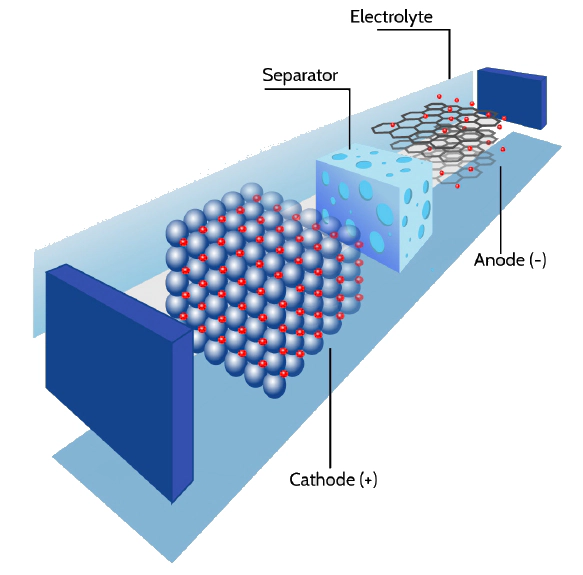S.O.H. and R.U.L. of Li-ion Battery using Particle Filter.
 Li-ion battery
Li-ion batteryEnvironmental issues triggered by emissions from conventional vehicles have accelerated the adaptation of electric vehicles (EVs) for urban transportation. Lithium-ion (Li-ion) batteries have been widely used in many new energy systems as a power source because of their high-energy density, long service life, and low pollution. Li-ion batteries are used as the energy source for many devices. Thus, they are quickly becoming the most common power source for EVs. The present energy economy based on fossil fuels is at serious risk due to a series of factors, including the continuous increase in the demand for oil, the depletion of non-renewable resources and the dependency on politically unstable oil-producing countries. Another worrying aspect of the present fossil fuel energy economy is associated with CO2 emissions, which have increased at a constant rate, with a dramatic jump in the last 30 years, the CO2. The level has almost doubled passing from 1970 to 2005, thus resulting in a rise in global temperature with associated series of dramatic climate changes. The urgency for energy renewal requires the use of clean energy sources at a much higher level than that presently in force. The CO2 issue, and the consequent air pollution in large urban areas, maybe only solved by replacing internal combustion engine (ICE) cars with ideally, zero-emission vehicles, i.e. electric vehicles (EVs) or, at least, by controlled emission vehicles, i.e. full hybrid electric vehicles (HEVs) and/or plug-in electric vehicles (PHEVs). Accordingly, investments for the exploitation of renewable energy resources are increasing worldwide, with particular attention to wind and solar power energy plants (REPs), which are the most mature technologies. Electrochemical systems, such as batteries and supercapacitors, that can efficiently store and deliver energy on-demand in stand-alone power plants, as well as provide power quality and load levelling of the electrical grid in integrated systems, are playing a crucial role in this field. Indeed, the advantage of the use of electrochemical storage systems has been demonstrated for both wind and photovoltaic REPs. The efficacy of batteries in REPs is directly related to their content in energy efficiency and lifetime. Indeed, in virtue of their high value of energy efficiency, lithium batteries are expected to provide an energy return factor higher than that assured by conventional batteries, e.g. lead-acid batteries Remaining useful life (RUL) is the useful life left on the Li-ion battery at a particular time of operation. The estimation of the RUL of Li-ion batteries is essential to prognostics and health management (PHM). The batteries are subjected to physical and chemical degradation during their operations. The main factors of degradation are related to electrode corrosion and electrolyte degradation. Some methods have been developed to estimate and calculate the state of health (SOH) of battery.
We propose estimation of SOH and RUL of Li-ion battery using particle filters over SVM.